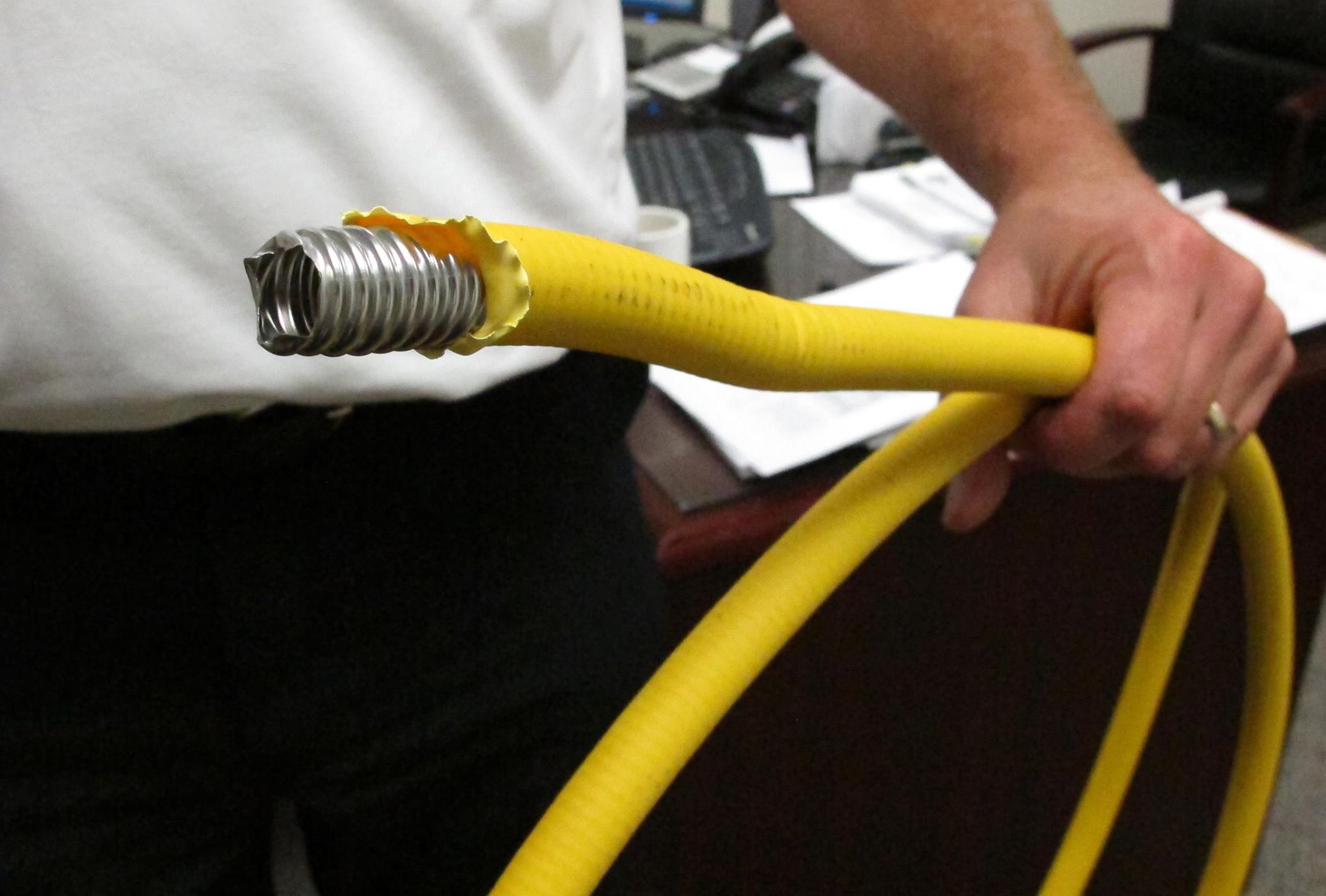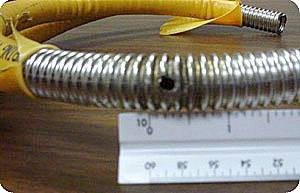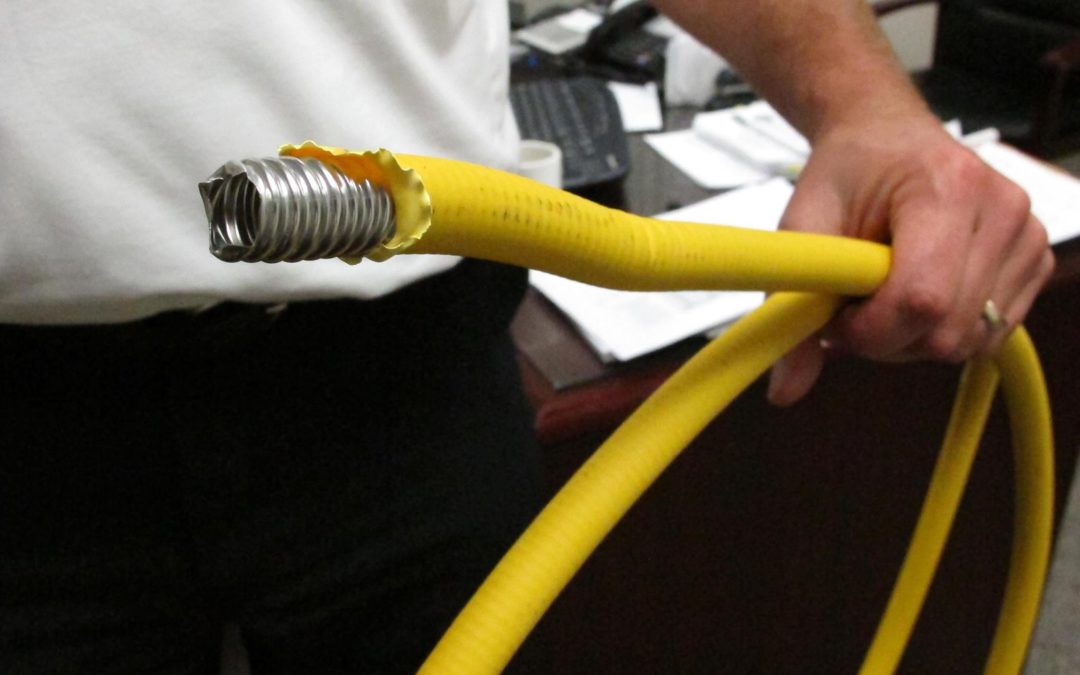Last week we posted about roof flashing that can cause anywhere from minor to mild water damage to your house if not taken care of. This week we will talk about an issue that is quite severe and scary. Sorry for the long post ahead of time, but it is that important of a subject.
CSST (Corrugated Stainless Steel Tubing) is a yellow gas line that is used with a lot of newer construction and has many advantages for the installer that saves time and money, however, if installed incorrectly, it can have catastrophic consequences. Attached are photos of this type of gas line.

Biggest problem that is coming up is that entire houses are actually exploding when installed wrong. The advantage for using this tubing is that in the older days when the black iron piping was used for gas lines, it did not bend, so the installer had to make sure that all holes that ran through floor joists where lined up perfectly to run the lines through them.
Now, we have a bendable gas line so the precision of the holes doesn’t matter as much and the installation goes much faster. However, CSST (if I remember correctly from a seminar I was at a few years ago) is only about 1/32 the thickness of the black iron pipe. If the installer secures this tubing to any metal, such as ductwork, and the house is hit with lightning, what engineers are finding is that it will create an arc and pierce the tubing (since it is so thin) and create a gas leak.
The houses are filling with gas and then eventually finding a source to ignite (pilot light in a water heater or furnace) and the houses are exploding. At a seminar I was at where they went into depth about this, the instructor said that they went to a class to become certified in installing this tubing and brought their secretary who has no background in construction at all.
After a 3 hour class, the secretary received a certificate that she was licensed to install this piping and she admitted afterwards, that she would have no idea what she was doing if she was asked to install it. So it doesn’t take much to be “certified” to install this stuff. I actually witnessed a house about 3 years ago in Chillicothe that was built by a large local company (not going to name names but they have a huge building just north of 74 between Bloomington and Peoria that’s white and blue) that I counted 7 or 8 places where this tubing was strapped to other types of metal and I forwarded my photos to the instructor of the seminar and he said if lightning hit this house, it would most likely result in an explosion if it wasnt fixed.

Please check your house and see if this stuff is in it and make sure it is nowhere near any metal surface. I believe the code in place says at least 6 or 8 inches away, but I’m not 100% sure. I would play it safe and make sure it’s at least a couple feet.

